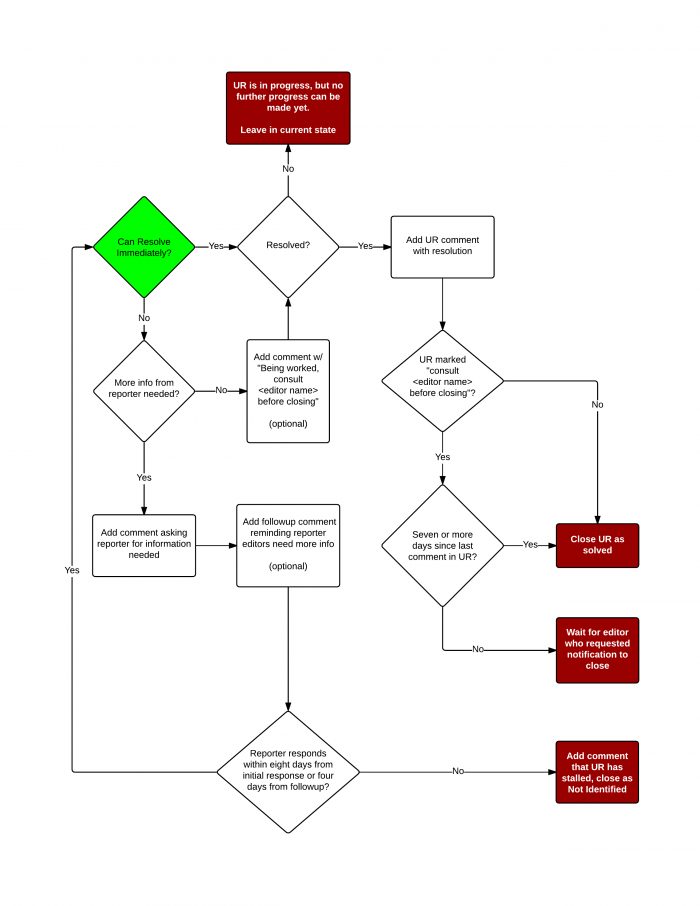(Added Speed Limit guidance to the Ohio wiki) |
|||
| Line 77: | Line 77: | ||
Ohio has no variances from the USA Speed Limits wiki: [[Speed_limits/USA | USA Speed Limits Wiki]] | Ohio has no variances from the USA Speed Limits wiki: [[Speed_limits/USA | USA Speed Limits Wiki]] | ||
=== Speed Limit Effective-Location for Ohio === | === Speed Limit Effective-Location for Ohio === | ||
Speed Limits in Ohio change at the sign. This is important when determining where speed limit changes should be marked on the Waze map. USA guidance for states that "change at the sign" is given [[Speed_limits/USA#State_law_speed_limit_changes_at_the_sign | here]]. | Speed Limits in Ohio change at the sign. This is important when determining where speed limit changes should be marked on the Waze map. USA guidance for states that "change at the sign" is given [[Speed_limits/USA#State_law_speed_limit_changes_at_the_sign | here]]. | ||
Where speed limits change is an important decision for clear guidance to drivers. There are many considerations for appropriately marking speed limit changes on the map. Editors, especially new editors, should be familiar with the USA Speed Limits wiki, a link to which is shown above. | |||
For example, if there is an intersection within 200 feet of the speed limit sign, then the speed-change location should be made at that intersection. If the speed-change location is within 200 feet of an existing junction node, not an intersection, then we don't add a new junction node. | |||
Always refer to the USA Speed Limits wiki for guidance, and check with your Area or State Managers for clarification if needed. | |||
== Update Requests == | == Update Requests == | ||
Revision as of 21:02, 10 June 2016
Lock Levels
Ohio implements the Great Lakes Region minimum lock levels for Waze road types:
Minimum Road Lock Standard
| Minimum Road Lock Standard | ||
|---|---|---|
| Segment Type | Direction | Level |
| Freeway | 5 | |
| Ramp | HCS* | |
| Major Highway | 3 | |
| Minor Highway | 3 | |
| Primary Street | One-way | 3 |
| Two-way | 2 | |
| Street Private Road |
One-way | 2 |
| Two-way | 1 | |
| |-|-|-|-|-|-|-|-|-| Railroad |-|-|-|-|-|-|-|-|-| | 2 | |
| • • • • Ferry • • • • | 2 | |
| ⁃ ⁃ ⁃ ⁃ ⁃ Runway ⁃ ⁃ ⁃ ⁃ ⁃ | 5 | |
| Other Named Types | 1 | |
| Segment Group | Level | |
| Construction Areas (changes without aerial images) |
3 | |
Terms
- HCS - Highest Connecting Segment
Additional Info
See Ohio/Major roads for additional information on the regional standards in this section.
Speed Limits
Ohio has no variances from the USA Speed Limits wiki: USA Speed Limits Wiki
Speed Limit Effective-Location for Ohio
Speed Limits in Ohio change at the sign. This is important when determining where speed limit changes should be marked on the Waze map. USA guidance for states that "change at the sign" is given here.
Where speed limits change is an important decision for clear guidance to drivers. There are many considerations for appropriately marking speed limit changes on the map. Editors, especially new editors, should be familiar with the USA Speed Limits wiki, a link to which is shown above.
For example, if there is an intersection within 200 feet of the speed limit sign, then the speed-change location should be made at that intersection. If the speed-change location is within 200 feet of an existing junction node, not an intersection, then we don't add a new junction node.
Always refer to the USA Speed Limits wiki for guidance, and check with your Area or State Managers for clarification if needed.
Update Requests
Ohio is using the Great Lakes region Update Requests Response System:
Overview
NOTE: all day values are relative to the date the FIRST editor response is sent to the reporter.
Response Timeline
- Day 0: the first editor who is able to respond to UR should attempt to resolve the UR. If they are successful, they should comment as such in the UR and mark it closed. If more information from the reporter is required to make progress towards closure, a response should be sent to the reporter containing the information needed for resolution
- Day 4+: polite reminders should be sent to reporters who have not responded to the initial at any time, provided at least four full days have elapsed since the initial response was sent
- Day 8+: URs may be noted as closed due to lack of reporter response at any time, provided at least four full days have elapsed since the followup message was sent
Shared Ownership:
- All editors are considered to have equal ownership of and responsibility for all URs in the Great Lakes Region.
- All editors, regardless if they have worked the UR previously, may send any of the responses describe above, provided they adhere the minimum time spacing guidance between responses.
- All editors are explicitly encouraged to attempt resolving URs at any point during their lifecycle, even if others happen to be actively working it at the same time
Notes:
- The ideal timeline for UR response is when responses are sent as early as the minimum required time spacing between messages permits; experience has reliably shown that UR response rates are much higher when editors are able to send responses promptly
- While strongly recommended, it is not required to send the followup message.
